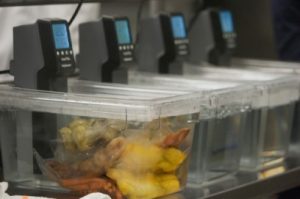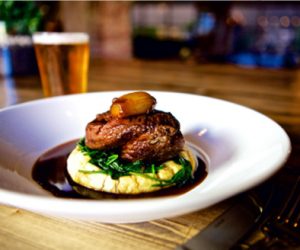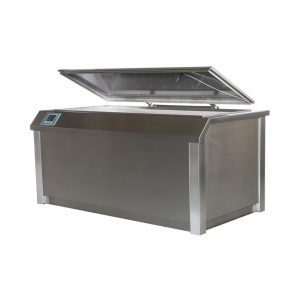The rise of sous vide in restaurant food preparation
July 13, 2014
What is sous vide ?
Sous vide cooking is a combination of two distinct process.
The first is vacuum packaging.
Food items are prepared either raw or partly cooked then chilled to below 3C before being seal in plastic pouches under 99.9% vacuum.
This process has many benefits to the chef;
- marinade volumes can be reduced with enhanced results,
- likely hood of cross-contamination after sealing is greatly reduced,
- likelihood of accidental food spillages are minimised
- food is held firmly so that the rigors of cooking will not damage the presentation of the food item.
The negatives are;
- the food is now stored in a moist anaerobic environment,
- This removes the chef’s ability to use their senses to assess the foods condition.
The second process is precisely controlled low temperature cooking.
This takes place by submerging the vacuum pouch of prepared food in to a water bath, controlled by an immersion circulator or on racks in a Combi oven on the steam or mixed steam convection setting. Cooking temperatures are generally between 55C to 90C. Cooking times will range from 10 minutes to 72 hours. The use of combi ovens for short cooks of less than 2 hours or below 70C are not recommended as the oven is not designed to control heat with the required accuracy nor is air a satisfactory medium for heat transfer.
The benefits to the chef are;
- control of doneness to one tenth of a degree Celsius,
- complete consistency,
- the ability to hold product long enough to achieve pathogen kill steps for HACCP without compromising doneness,
- improved moisture or texture of the cooked item,
- the ability to cook tough cuts of meat- meltingly tender- whilst retaining a medium rare appearance.
- Sous vide also allows the chef to cook with the sole aim of achieving 6-7 decimal reductions of Salmonella, Listeria and E.coli and still have a desirable food product.
- Most of all sous vide spreads the work load of a chef across the whole working day and creates a more managed work flow during the pressures of service.
- Sous vide items are precooked to predetermined time/temperature values then chilled rapidly in a way not possible with any other method of cookery as the food is vacuum packaged allowing for direct contact in an ice slurry,
- Items are then stored at fridge temperatures then reheated using one or a mix of water-bath, grill, pan, oven or deep fryer. Sous Vide cooking removes the possibility of undercooked food being accidently served to consumers. The chef at the pass is only required to achieve appearance and correct reheat temperature,
- doneness has already been achieved.
In affect sous vide low temperature cooking is a refined extension of the cook chill process.
How many kitchens are using sous vide cooking in Victoria?
My company is the largest supplier of ‘purpose built’ hospitality sous vide equipment in Australia. We are one of ten companies Australia wide that import this type of equipment for restaurant kitchens. My company Sous Vide Australia has sold over 800 sous vide units in Victoria in the last four years and I am aware of Class 2 Retail and Food Service Businesses in every municipality within Victoria that are using sous vide cooking.





